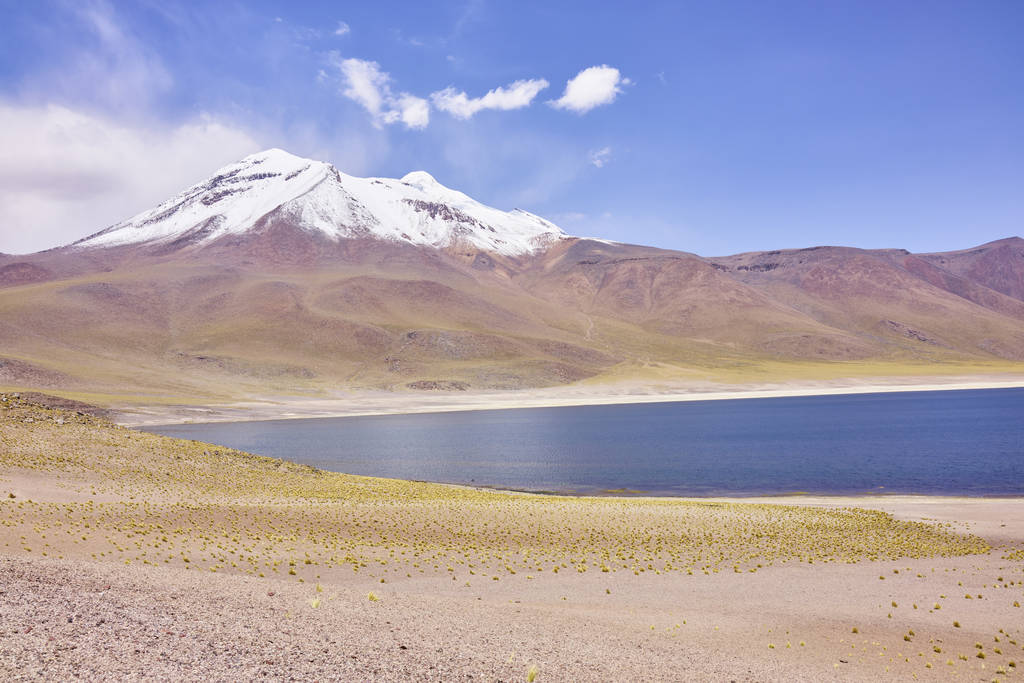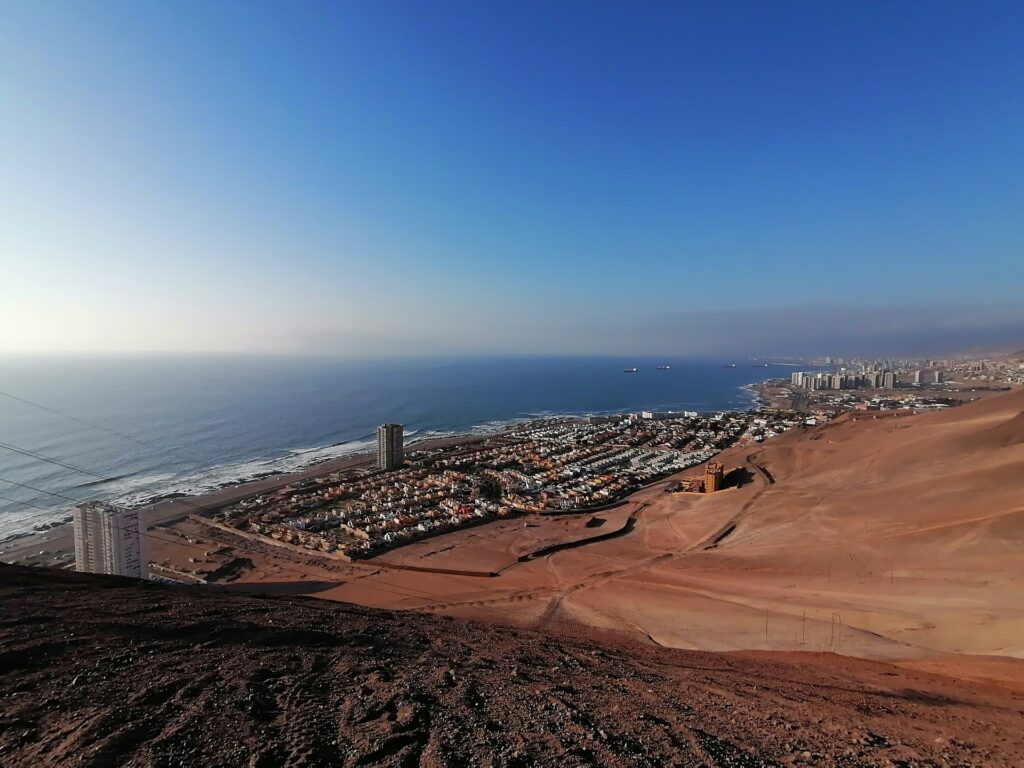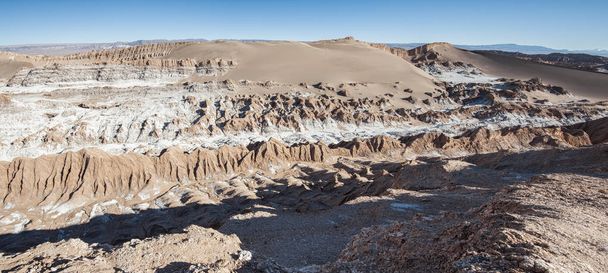Introduction
Nestled between the remarkable Atacama Desert and the expansive Pacific Ocean, Antofagasta is a city of contrasts and convergence. Known as “La Perla del Norte” or “The Pearl of the North,” Antofagasta is a unique blend of natural splendor and industrious vigor. It stands as one of Chile’s primary mining hubs while simultaneously offering captivating coastal landscapes. The juxtaposition of its raw industrial prowess against the tranquil expanse of its beaches makes Antofagasta a fascinating locale.
Mining in Antofagasta: The Bedrock of Prosperity
The economic lifeblood of Antofagasta is its mining industry. The region is one of the world’s leading producers of copper, a critical element in modern electronics and infrastructure. The mining sector here is not just an industry but a defining element of the city’s identity.

A Historical Perspective: Mining activities in Antofagasta can be traced back to the 19th century when nitrate extraction was the primary activity. The discovery of abundant copper deposits steered the city toward becoming a powerhouse in copper mining. The Escondida Mine, located in the Atacama Desert, is the largest copper mine in the world, producing a significant portion of the world’s copper supply.
Economic Impact: The mining sector contributes significantly to Chile’s GDP, with Antofagasta being a major participant. Employment opportunities in the mining industry attract professionals from various technical fields, fostering a well-developed urban infrastructure catering to a modern workforce. The presence of mining giants like BHP, Codelco, and Antofagasta Minerals underscores the city’s strategic importance.
More:Read about on Amazon Theatre, Manaus, Brazil,Beni River- Opera House in the Jungle
Technological Advancements: Antofagasta is at the forefront of innovative mining techniques. The implementation of technology such as autonomous vehicles, renewable energy integration, and advanced mineral processing techniques exemplifies the city’s commitment to sustainable and efficient mining practices. This focus on innovation has positioned Antofagasta as a global leader in mining technology.
Coastal Charm: The Alluring Edge
While mining anchors the city’s economy, Antofagasta’s coastal attractions offer an aesthetic and recreational counterbalance. The Pacific coastline, with its striking views and serene beaches, provides a delightful respite from the arid desert surroundings.

Beaches and Natural Wonders: The city boasts several beautiful beaches, like Playa Paraiso and Playa El Balneario, which offer golden sands and clear, inviting waters. These beaches are perfect for relaxation and various water sports, drawing locals and tourists alike. La Portada, a natural stone arch by the sea, is one of the city’s iconic landmarks. This geological marvel, sculpted by the persistent forces of wind and water, provides a dramatic backdrop against the azure Pacific.

Urban Attractions and Cultural Sites: Antofagasta’s coastal area is home to the Historic Quarter, which celebrates the city’s rich cultural heritage. The clock tower in Plaza Colón is a notable landmark reminiscent of Big Ben and stands as a historical testament to British influence during the mining boom. The Antofagasta Regional Museum offers insights into the region’s past, focusing on its mining history and cultural evolution.
More:Odishashop, visit here
Harbor and Waterfront Development: The port infrastructure of Antofagasta is vital for exporting mined minerals and importing goods necessary for the city’s population and industry. The city has invested in developing its waterfront area, turning it into a lively promenade with restaurants, cafes, and recreational spaces. The Hand of the Desert, a colossal sculpture by Mario Irarrázabal, sits a short drive away into the desert, symbolizing humanity’s reach and resilience in the harsh terrain.
Balancing Act: Environmental and Economic Considerations
Antofagasta faces the challenging task of balancing its booming industrial activities with environmental preservation. The mining operations undoubtedly have environmental impacts, such as water usage and landscape alteration. However, initiatives to mitigate these effects are in place.
Sustainable Mining Practices: Companies in Antofagasta are increasingly adopting sustainable practices. Efforts include using sea water for processing, recycling waste materials, and reducing emissions through cleaner energy sources. Solar energy, abundantly available in the Atacama Desert, plays a significant role in powering mining operations, steering the industry towards a greener future.
Marine Conservation Efforts: The coastline of Antofagasta is also subject to conservation efforts to protect marine life and habitats. Local organizations and government bodies work together to ensure that the coastal ecosystems remain vibrant and healthy despite the industrial activities nearby.
Conclusion
Antofagasta epitomizes the harmony achievable between industrious ambition and natural beauty. Its significance as a global mining hub is incontestable, with technological innovations propelling it toward sustainable practices. Concurrently, its coastal allure offers a serene counterpoint, with pristine beaches and intriguing cultural landmarks. This duality makes Antofagasta not only a cornerstone of Chile’s economic landscape but also a testament to the country’s ability to balance development with natural charm.

As Antofagasta continues to grow and evolve, it remains a fascinating study of contrasts—a bustling urban center deeply rooted in the harsh, yet beautiful, landscapes of northern Chile. This unique character renders Antofagasta a compelling destination for both industry professionals and travelers alike, promising a glimpse into the intricate dance between human endeavor and nature’s splendor.
FAQ For Antofagasta, Chile: A Symbiosis of Mining and Coastal Charm
What is Antofagasta known for?
Antofagasta is renowned as the “Mining Capital of Chile” due to its significant role in the country’s mining industry, particularly in copper production. It also boasts stunning coastal landscapes and a rich cultural heritage.
What are the main attractions in Antofagasta?
Visitors can explore the La Portada Natural Monument, a breathtaking coastal arch, relax on the city’s beautiful beaches, and visit mining museums to learn about the region’s mining heritage. The city also offers a vibrant waterfront promenade and a variety of dining experiences.
Can I visit a copper mine in Antofagasta?
Yes, various copper mines in the surrounding area offer guided tours that provide insight into the mining process and its significance to the region’s economy. It’s an opportunity to witness the impressive engineering feats of the mining industry.
Are there cultural experiences in Antofagasta?
Absolutely! The Antofagasta Regional Museum offers a comprehensive look at the region’s history, including its indigenous cultures and the impact of mining on the city’s development. Additionally, visitors can immerse themselves in the local culinary scene, embracing traditional and contemporary flavors.
What outdoor activities are available in Antofagasta?
Antofagasta is a paradise for outdoor enthusiasts. The city’s beaches are perfect for sunbathing and water sports, and the surrounding natural landscapes offer opportunities for hiking, birdwatching, and enjoying the coastal scenery.
How can I get to Antofagasta?
Antofagasta is accessible by air through the Cerro Moreno International Airport, and it’s also connected to other major cities in Chile by road and bus services.
Is Antofagasta a safe city for tourists?
Antofagasta is generally considered safe for tourists, but it’s advisable to take standard precautions regarding personal safety and belongings, especially in crowded or touristy areas.

